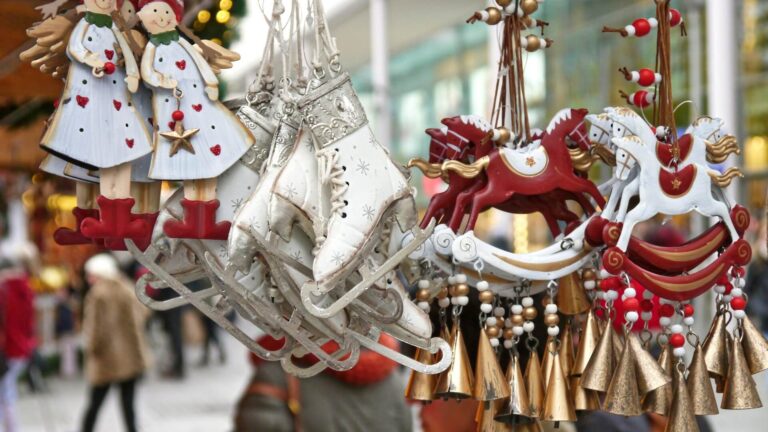
If you need a freelance travel writer or you would like to see your country, city, flight, etc., presented on the blog, drop me an email.
Find our more on Freelance Travel Writer page.
Things to do in Mdina and its attractions are not to be missed. This is where the Maltese diverse heritage really comes to life. On one hand, this was a bustling town during the Romans, while on the other, the name itself reveals that it has something to do with the Arabs (medina meaning ‘town’ in Arabic).
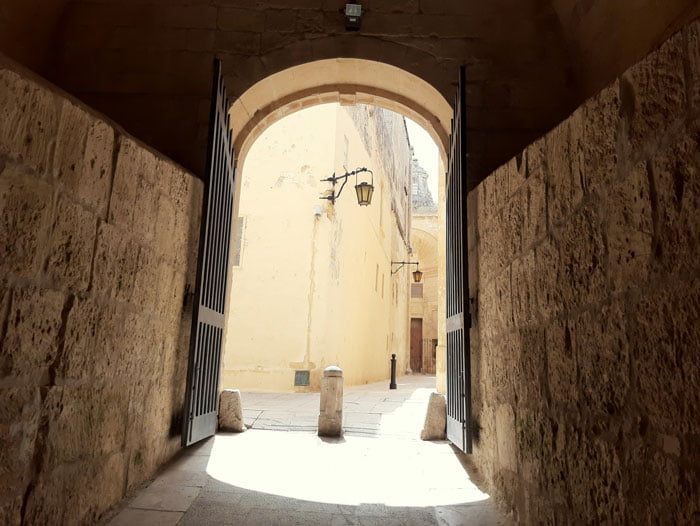
Actually, the Maltese language is Semitic in its origins, while the island was also under the rule of the Arabs from 870 until the 11th century. Today the language sounds like a mixture of Arabic, maybe even some kind of Turkish or Hungarian, and Italian. The official languages are both Maltese and English. Given the fact that I had the opportunity to learn Arabic for two years, I was genuinely amused by the streets and station names I came across. So, here you can see the street named Il Kbir (in Arabic one would say al kebir) and at the same time, the famous Maltese pastry is called pastizzi which definitely sounds Italian.

Also, they use some sort of Cyrillic letters in the Latin alphabet, so that some words look like being written by someone who was seriously confused and didn’t properly learn either. Such a fascinating mixture! Just try to read this – Mellieћa. This is how it’s properly written! You read it as „Meliha”. It is the name of one of the most popular beaches on the island (more about beaches in the next post). In addition to that, some letters are pronounced differently. An example is the letter x which can sound like sh sometimes. Xlendi Bay (on Gozo island) is actually pronounced as ‘Shlendi Bay’. So, when you come across a word with the letters x, w, and then ћ, you just have to scratch your head first! Should I mention that I couldn’t remember the name of the fishermen’s village Marsaxlokk (more about the place next time), I couldn’t get it for days!
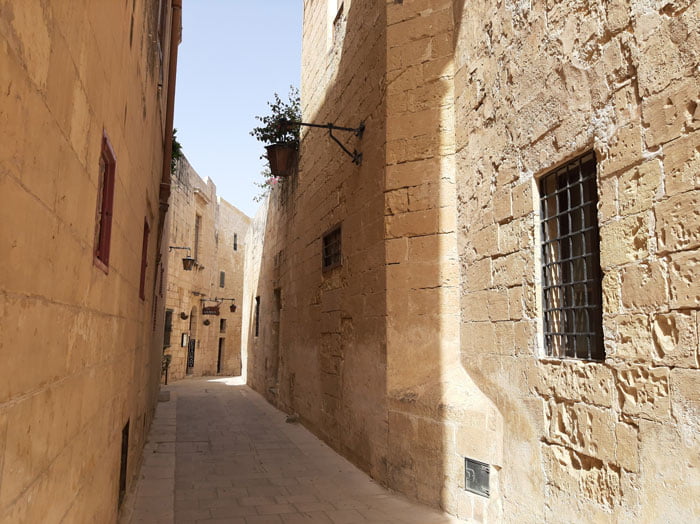
MDINA MALTA
Mdina was once the capital of Malta with Rabat being its suburb. It is believed that at the end of the hill occupied by Mdina today, once lied a Bronze Age settlement. The town was invaded throughout history by Phoenicians, Carthaginians, Romans etc. and yet it always remained urban. It was named Malita during the Roman rule, as was the whole island, being three times bigger than today. Mdina continued to be the administrative center and the only fortification on the island until the 16th century. It started to decline under Byzantine just to be replaced by the new capital Valletta. The character of the buildings also changed and in time, it was almost deserted. The town suffered a lot of damage during the 1693 earthquake after which the Grand Master of the Order of St. John Manoel de Vilhena rebuilt several public buildings and the main entrance.
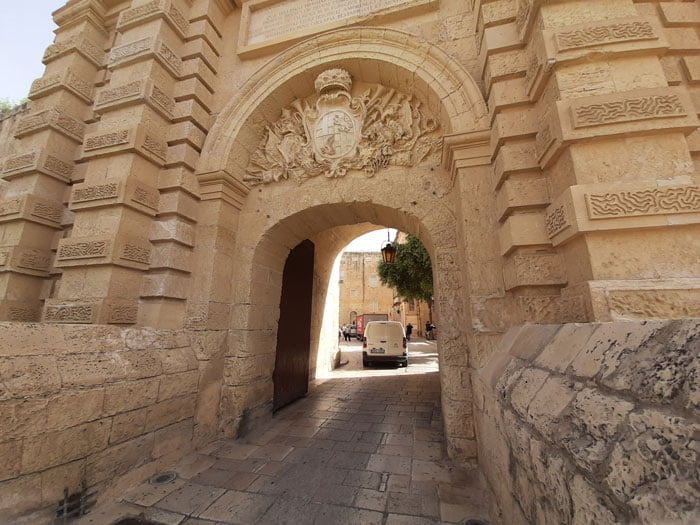
Also known as the Silent City, Mdina resembles Valletta (or I should say it’s the other way around given that Mdina is older), and it’s like an open-air museum. The most important Mdina Malta attractions are – a wide fortification with narrow streets, Baroque windows, interesting details decorating façades and palaces’ interiors, with churches, elegant domes, and street lanterns. It’s like a grand movie set, that’s the first impression you get as soon as you go through the Main Gate. (GOT fans, I didn’t forget you, don’t worry. Yep, this is the gate that Catelyn and Rodrik went through coming to King’s Landing.)

Those of you who follow the blog on Instagram already know that I couldn’t resist taking pictures of almost every charming detail I found, curving streets and walls with lush flowers hanging down. (You can still see it on Instagram highlighted under ‘Malta’.) Right after the Main Gate, there is the Vilhem’s palace, the mansion Grand Master built after the earthquake. The courtyard is more than charming.
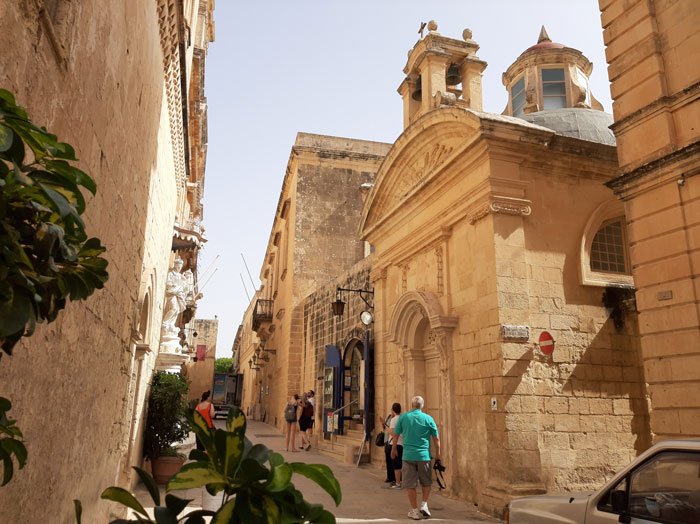
Cobblestone street will take you further into this labyrinth. Once you turn off the main street, you won’t be able to say where you are exactly (chances are that you were just going in circles), but eventually, you will come out to the small square with the church. That is the St. Paul’s Cathedral that rises above all the other buildings. It is built in 1693 at the very spot where the old church stood before the earthquake. You can admire its two bell towers with clocks showing different times and a very decorative interior. There is also the Cathedral Museum to be seen next to the church.
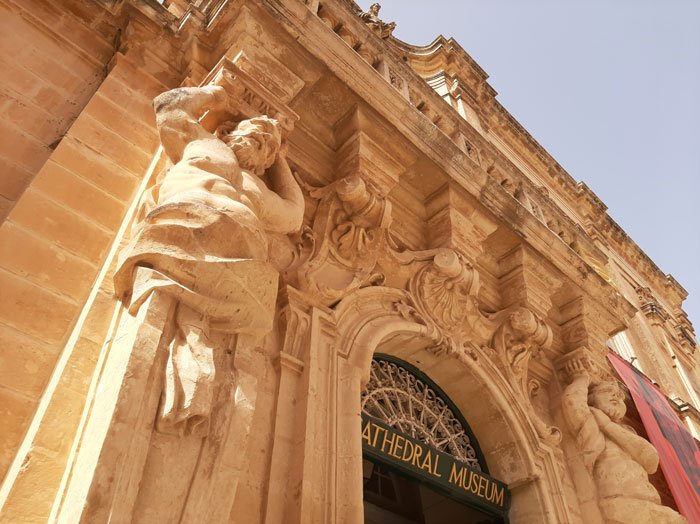
Immerse yourself into Mdina’s silent streets with the occasional guides passing by, explaining details in English, French, and Russian, while the karozzin (carriage) might come out of nowhere. You will have to wait your turn because the streets are sometimes so narrow that there is no way to pass by each other at the same time. At the opposite end of the Main Gate, there is also a lovely restaurant where I was told to stop by for some great local cake. A large lemonade with chocolate brownie cake costs less than seven Euros.
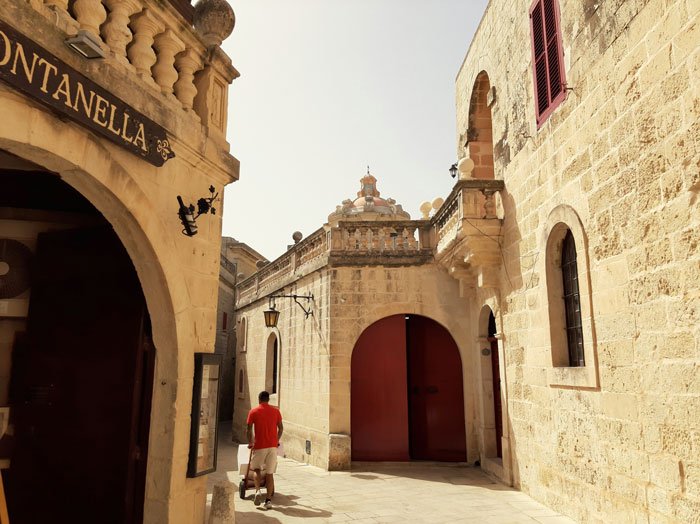
Try to stroll around the fort some more, because you will also end up at the charming small square Pjazza Mesquita which is also one of the Mdina Malta attractions. (The GOT scene was filmed here. It was when Jaime Lannister attacked Ned Stark in front of Littlefinger’s brothel.) Few more turns and arches, you will be out of the city walls.
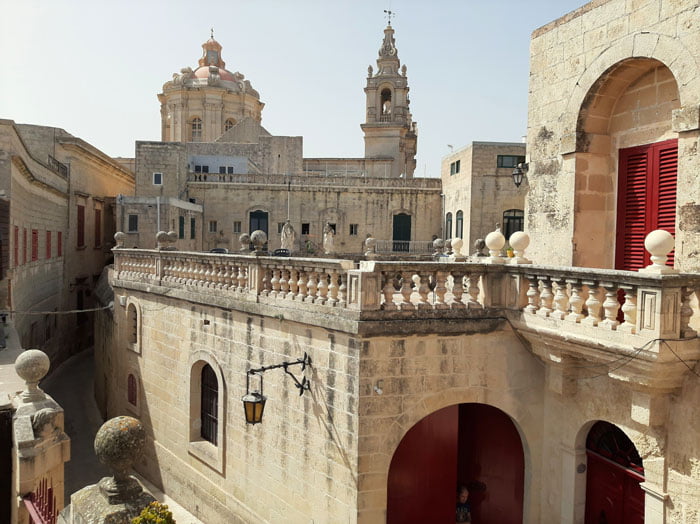
When you go along the walls for a couple of hundred meters, you will come by the Domus Romana Museum. It’s immediately clear what the place represents. The entrance fee for this former Roman urban house is six Euros and besides pottery, statues, etc., there is also a lovely floor mosaic to be seen with the typical motif of two doves. There used to be a row of Doric columns surrounding it. Remains of the former Roman town are also to be seen from the terrace of the Domus Romana.

RABAT MALTA
Just as Mdina got smaller through centuries, its suburb got more popular and densely inhabited. When religious orders came in the Middle Ages, they built churches and monasteries. Those structures are still in use, representing spiritual and cultural centers. Thus, the St. Paul’s Church (whose ship, they say, wrecked at Malta shores in AD 60), is located right above the so-called St. Paul’s Grotto where he was kept during his three months stay. The nearby catacombs bear his name as well and they were used for burials from the 4th century onward since the cemetery was forbidden inside the city walls.
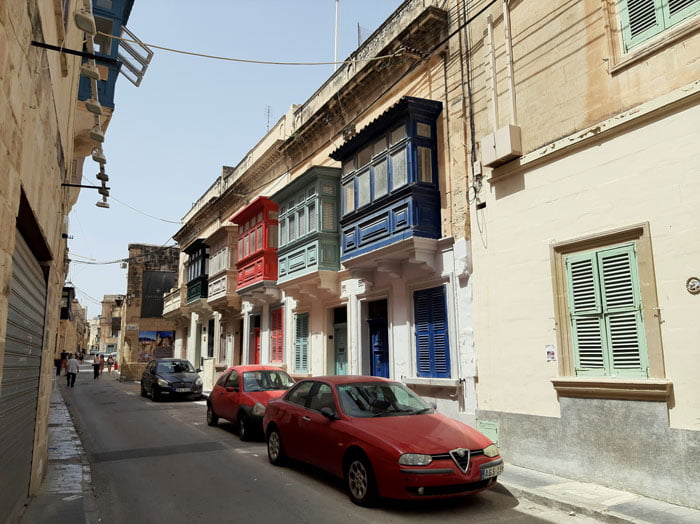
I was surprised to see that Rabat was actually on the other side of the street from Mdina, even though it’s a separate town today. (That is why it is incorporated into the same post “Things to do in Mdina”.) The familiar surroundings are to be found here as well with narrow streets, floral branches against the beige walls, and Baroque windows being blue, green, red, or white. Small squares were bursting with full restaurant terraces and pastizzerias. Even though I spent more time in Mdina than I expected, I couldn’t miss visiting the catacombs.
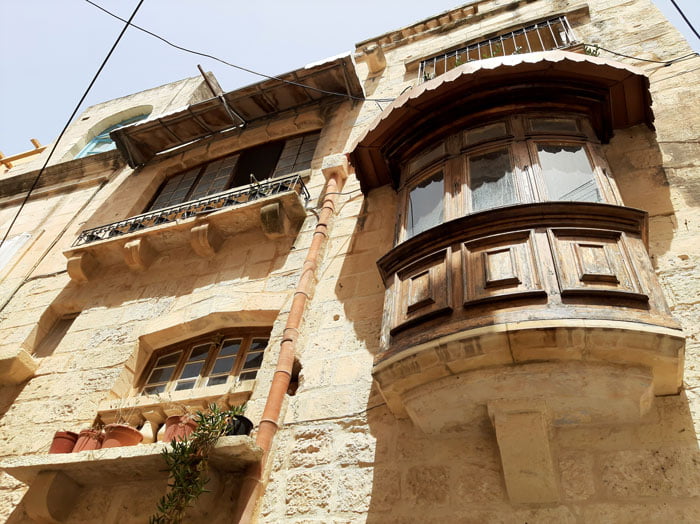
It’s not hard to find the site, the entrance fee is five Euros and you will soon go underground. Narrow passages are marked, and the space is equipped with air-conditioning, making it easy to move around. It strikes you how remarkable it is that people buried their loved ones here, densely lying next to or above each other. I went as deep into the catacombs as I could, hearing voices approaching. Smiled to other visitors and moved aside – the path was too narrow for two.
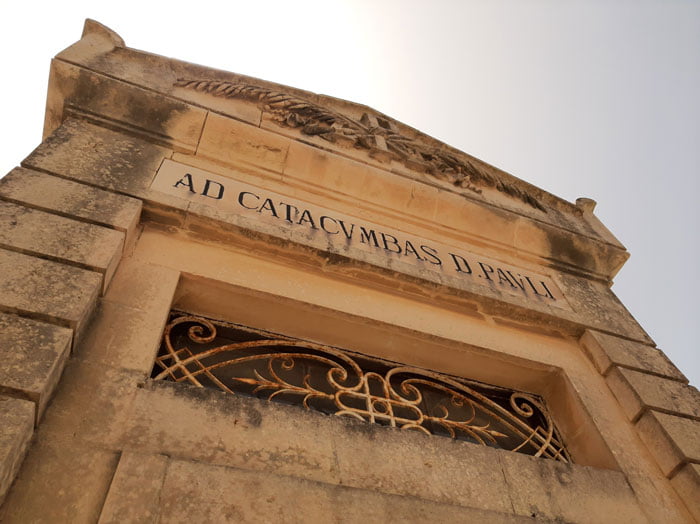
I am not normally into catacombs or any sort of burial grounds, but this is worth visiting. Such an underground labyrinth reminds you of something a colony of ants would build. This also gave me the opportunity to stroll through Rabat, to come across numerous dead ends, to try the local ice cream, and then catch the bus towards the Mosta church.
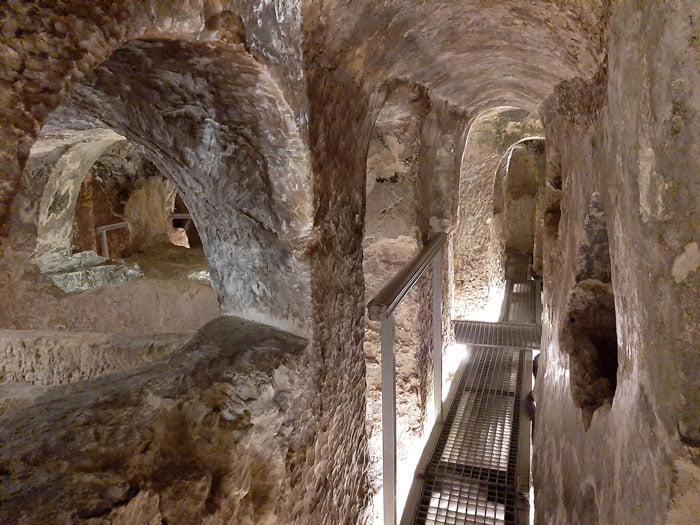
There is the 186 bus that goes to Mosta which was, to my surprise, not that late. Still, I managed to wait for the bus on the wrong side at first, since the Maltese drive on the left side of the street (opposite to what I’m used to).
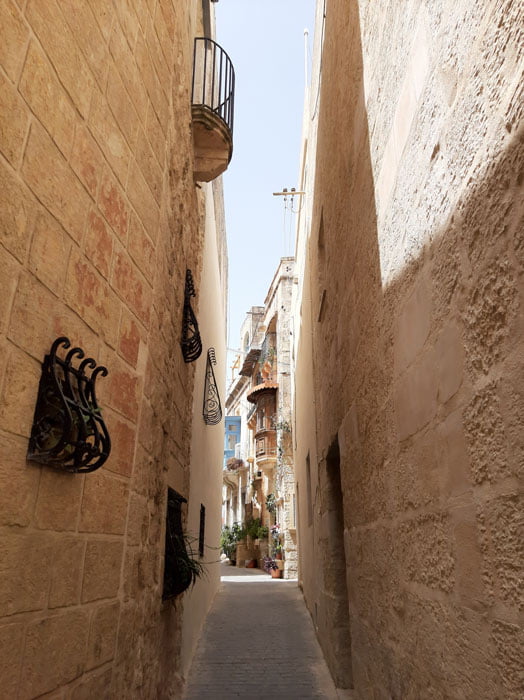
MOSTA CHURCH
Mosta became popular after the knights of the Order of St. John introduced coastal defense, since the settlement has always been prone to attacks by pirates. This is the time when it was elevated into a parish which lead to a bigger church to be built, the Rotunda. The huge dome was finished in the 19th century when the population also increased. The dome is specific for being built without any columns to support it, while the architect wanted it to resemble the Pantheon. It was the only church of its kind in the whole Malta that took 30 years to build.
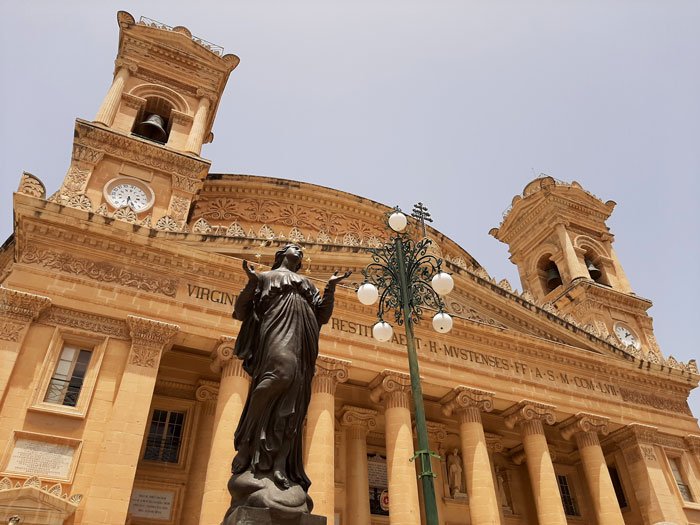
The Rotunda is hard to be missed when you get to Mosta. Even though the streets might be totally unfamiliar (and so narrow that the bus couldn’t turn until all the cars from the opposite side went by or until the driver who parked right at the crossroad didn’t eventually move his vehicle), you will easily recognize where to get off, because the church dominates the vast square in the village. It’s beige with an elegant portico, sculptures, and columns.
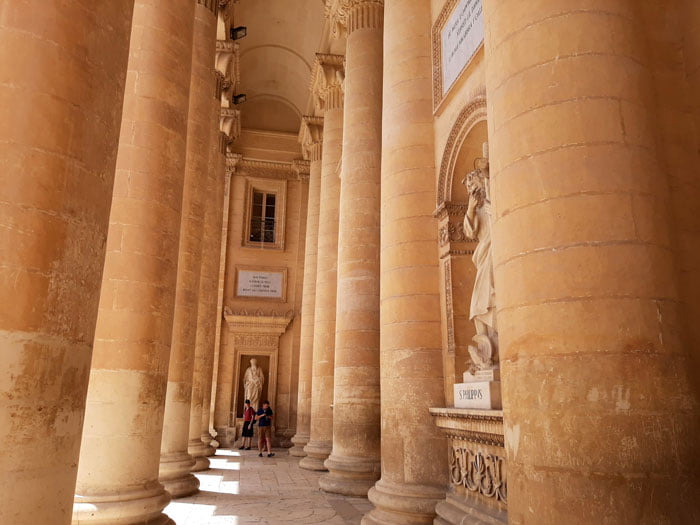
The entrance fee is two Euros (five if you want to visit the gallery), and the moment you step inside you immediately understand why they say that it looks like lace. The niches and arches match the same details.
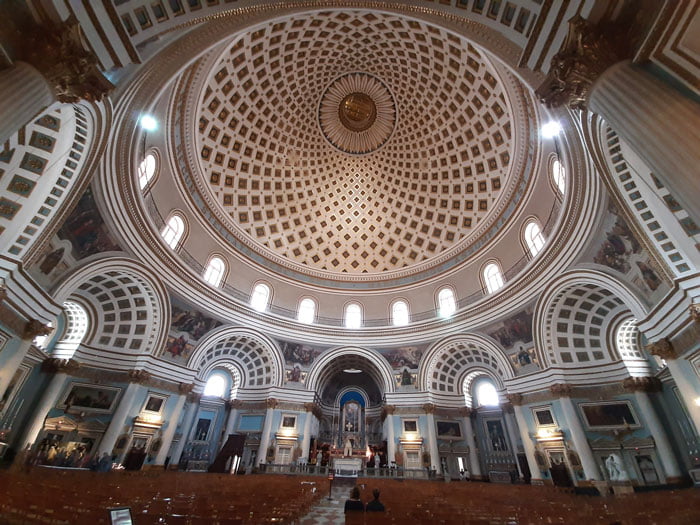
I don’t really know how many pictures I took here. Whenever I moved a few steps aside it seemed like the site got even more pretty from that angle. Arches and decorations look like they float above your head, curving until they reach the central point. And when your neck starts to hurt that’s the sign you should probably move on.
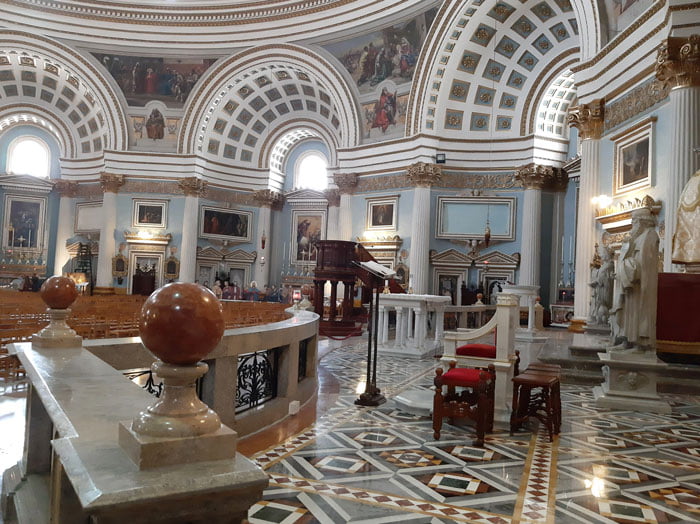
At the souvenir shop, there is the church model to be seen, along with the thing the church is also famous for. The story says that during WWII in 1942 several bombs were dropped around the church, and one of them pierced the dome itself. Even though there were 300 people inside, no one was hurt, and the bomb – didn’t even explode. It was easy to fix the small damage and the bomb is kept as proof of “a miracle”.
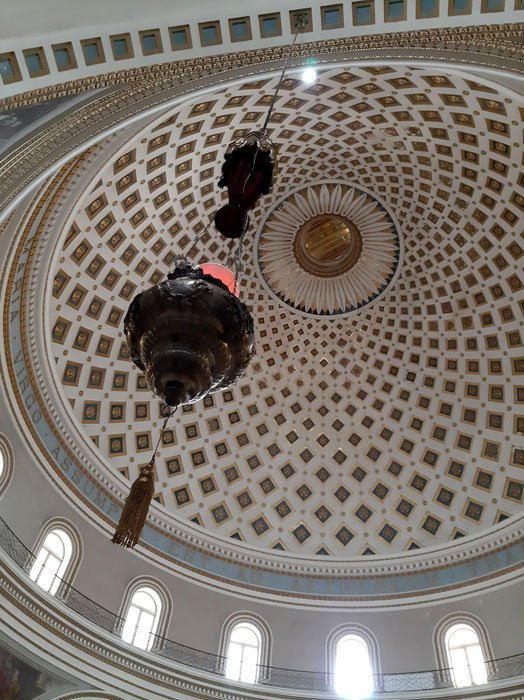
I was supposed to go back from Mosta to Spinola Bay in St. Julian’s because that was the place to take the speedboat to Comino island (I will tell you all about the beautiful sunset in the next post). True, it doesn’t sound that complicated, at least not if you don’t consider that the bus took off 10 minutes before it was scheduled and that all of us who came – on time, had to wait for the whole hour. Oh well, it gave me enough time to try the perfect quiche lorraine at the local pastizzeria, to take the same walk up and down the small curve at least 1,500 times, to put more sunscreen numerous times because the sun was merciless and the concrete was simmering…
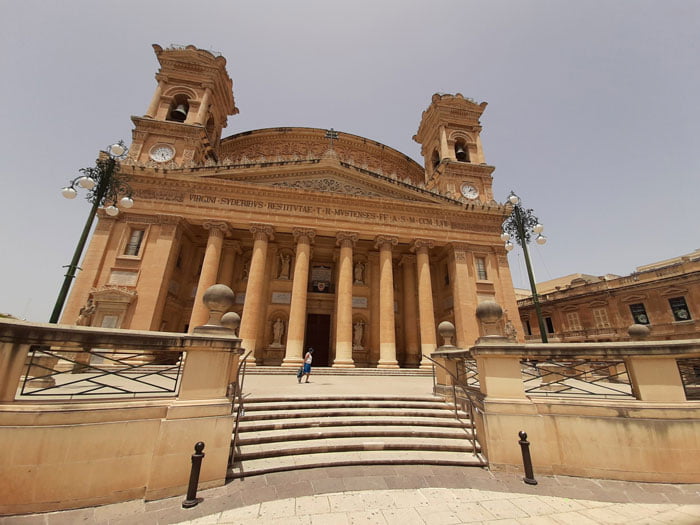
We covered the whole Malta public transportation area in the previous post, so this was no surprise. But I should mention a few settlements on the island. The first post is all about Valletta and the harbor, and it’s easy to reach any other town on the island from here, nothing is really that remote.
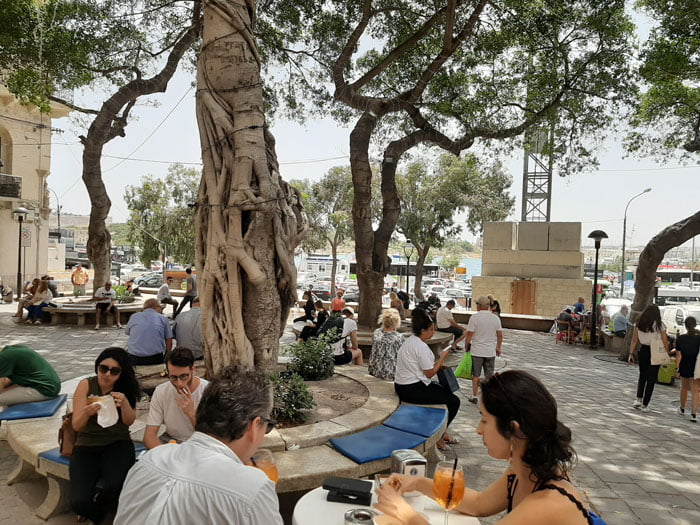
They say that Sliema means peace in Maltese. That’s the name of the settlement famous for its hotels and restaurants. Also, everywhere you turn there will be some cranes and a building site because vast parts of the area are under construction. If your accommodation is here, in St. Julian’s or San Gwann, it would be easy to commute and reach other places to visit. This is where the Paceville settlement is situated, the one with constant crowds, expensive hotels, shops, restaurants, and shopping malls. This charming neighborhood is bustling with people and goods, so expect the prices to go up accordingly, making it more expensive than other districts.
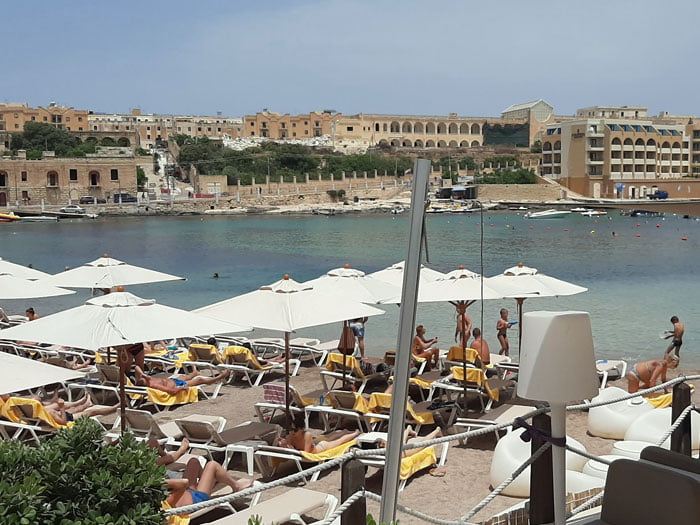
As soon as the first Malta post was up, a lot of you asked me how I went there. Well, WizzAir opened a direct flight from Belgrade Serbia to Malta this year. The flight lasts for less than two hours and it’s more than affordable, especially if you book off the season and at least a month in advance. My ticket was about 80 Euros and the AirBnB at Marina’s place was 20 Euros per day (single bedroom, spacious, clean). Given the fact that you can have a nice meal for 20-30 Euros, along with all those pastizzerias offering pastries for less than one Euro, your Malta holiday doesn’t have to cost much.
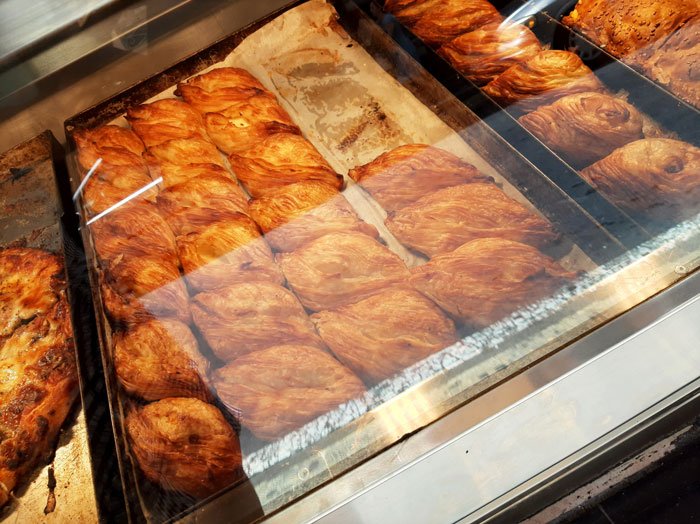
When it comes to fees, entrance to museums, cathedrals, etc. will cost you 5-10 Euros. An open bus is 20 Euros per line and you can hop on and off as much as you want to. Taxi is not that expensive either if you don’t go far. The ferry to Gozo and back is 4,65 Euros. There are various tours around the island that you can book with local agencies and they differ in price. You can even take a catamaran ride to Sicily.
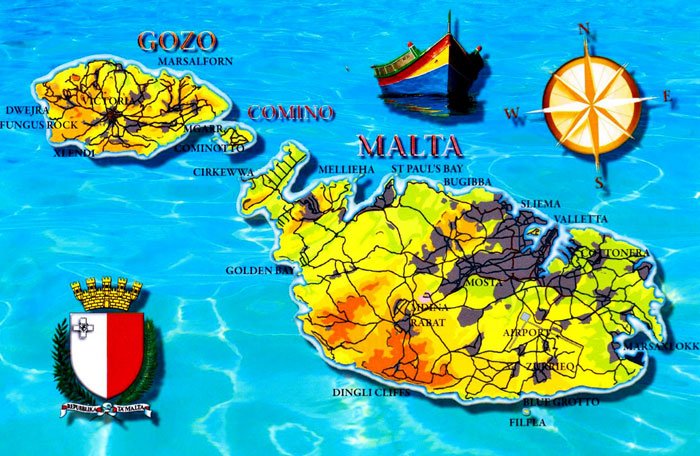
I was helped by Marina and her Leona Travel agency with all the right info. She welcomes guests from various countries given the fact that she speaks seven languages, booking accommodation for them, tours around the island, etc.
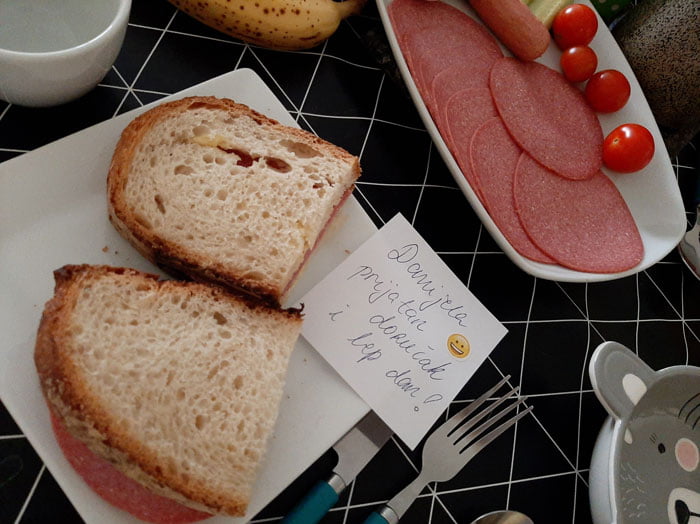
My breakfast was even embellished with the cheerful note on my plate every morning, in my own language!
Next: SEA, BEACHES AND THE BLUE LAGOON
The full Malta SERIES
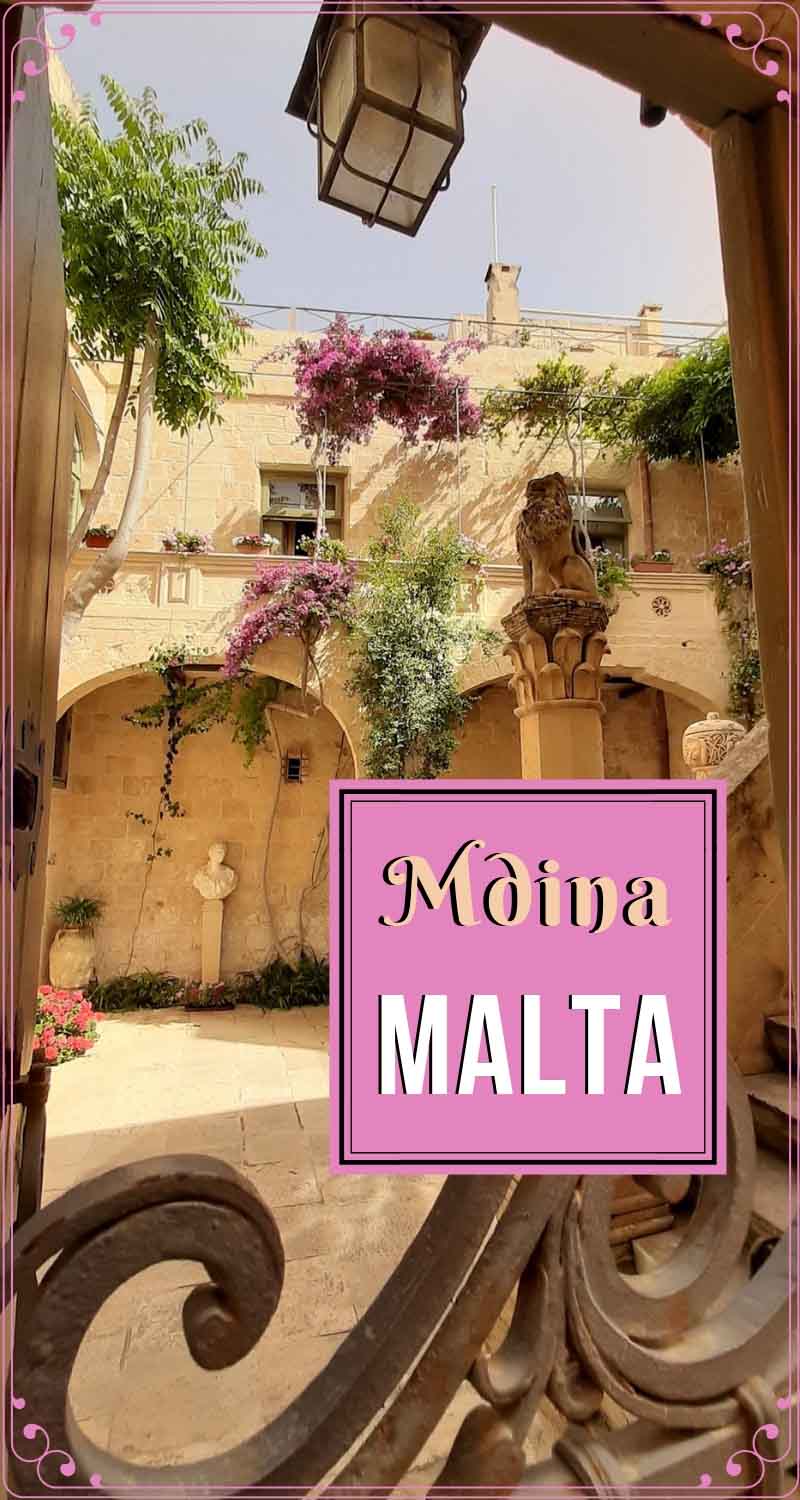
If you need a freelance travel writer or you would like to see your country, city, flight, etc., presented on the blog, drop me an email.
Find our more on Freelance Travel Writer page.
I am looking forward to working with you.
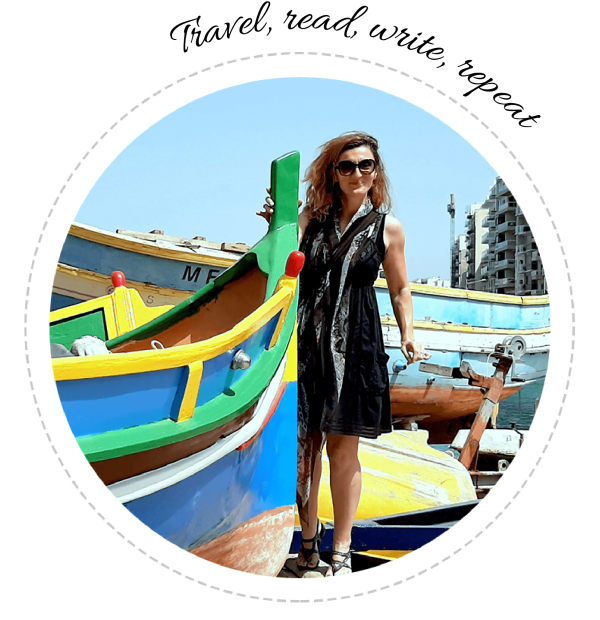



18 responses
Thanks for a great read ???? We’re off to Malta this weekend and your tips about Mdina, Rabat, and Mosta Church were really helpful. Definitely have these places added to our list ????
Hey, so nice to hear that this comes handy! 🙂 Yep, Mdina is a must, but check out the post about Valletta as well, even though I’m sure you’re not going to miss the capital. 🙂
Let me know what you think when you come back, I’ll be posting two more articles (one per week). Would love to hear your impressions.
Happy travels! 🙂
I’ve always wanted to visit these islands, looks spectacular exploring all those historic attractions, cool cobbled streets and fantastic places I love visiting.
You can imagine what a treat this was for me then, being a history buff and all. Thanks. 🙂
Such a beautiful town and with so much history! Malta is in my bucket list but i’ve never heard of Mdina before. Thanks for showing this place so well and with such detail.
Me neither, I’ve actually read about Mdina and Rabat for the first time upon deciding to visit. So glad I had the opportunity to learn more and see it for myself. Try not to miss it when you travel to Malta. 🙂
What a great read. I’ve recently met some people from Malta and that got me really intrigued to visit the country. I love the color of the streets and buildings in Mdina. Gorgeous shots and what a fascinating history. Great to know about the affordable flights from Whizz Air. I will definitively plan on visiting soon.
Thanks, I’m glad that I’ve contributed to your wanderlust. 🙂 Also, there is some great food I know you’d be interested in. There will be more about it in the upcoming posts.
Thank you, Rosemary, hope you get there soon. 🙂
Malta is definitely someplace we want to visit. Looks like we should definitely make sure to visit Mdina. I can see why you would say it looks like a grand movie set. I love the idea of narrow cobble stone streets with something to see on every corner. So many beautiful buildings – inside and out. And it would be great to visit a place that is not overloaded with tourists. We would definitely want to visit the underground labyrinth.
Mdina is also full of tourists, but given that it’s a bit remote and far from all the posh settlements and beaches, it’s still not that crowded. Perfect when you stroll around those narrow streets without a living soul in sight. They do call it the silent city after all. 🙂
You’d love the catacombs as well, it’s such an interesting site!
It sounds like you had a nice trip to Malta from your travel diary. We’ve had Malta on our list ever since we moved to Europe a decade ago, but haven’t managed to make the trip there just yet. We definitely want to see the natural sites as well as explore the towns.
Malta is not that big which makes it easy to visit from shore to shore. I’m sure you’d find both, nature and urban areas. Make that trip happen, you won’t regret it. 🙂
What a beautiful city, love the stone walls and old buildings. I haven’t started watching GOT yet but good to know a scene was filmed here. Wow, that dome at Mosta Church is incredible!
Forget about the GOT filming locations, just imagine the city that looks like it’s stuck in the Middle Ages. The atmosphere is just mesmerizing.
Yep, and the Mosta church is another thing to admire when coming to Malta.
Thanks, Debra! 🙂
Wow what a beautiful place to explore. I want to go to Malta and visit the beaches
It would be impossible to miss them. 🙂
So fascinating. Malta is so pretty. I really love the buildings. It’s fun to see the different GoT locations around the world. Wouldn’t it be fun to take a tour of all of them? I love the interior of the Mosta Church. The lace domes are gorgeous. The would be a really fun place to visit, and eat it sounds like.
There is one more significant GoT location here, the one when Daenerys came out of the fire with three dragons. It was filmed in the Mtahleb valley on Malta. 😉
So true, it would be nice to visit them all.
Thank you, Kathleen. <3